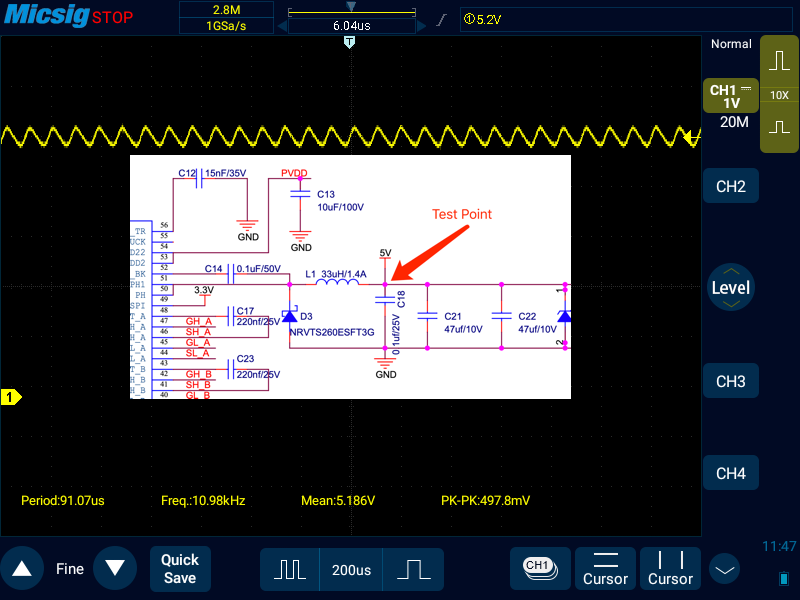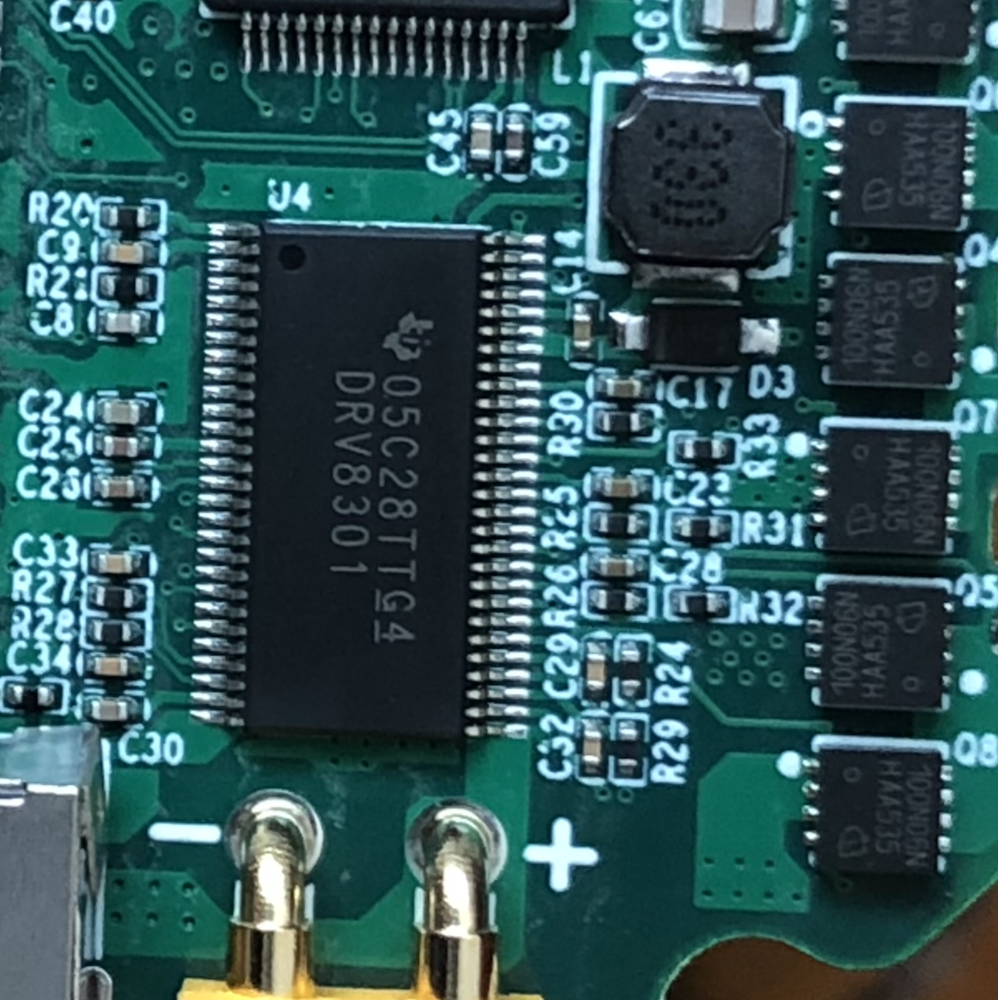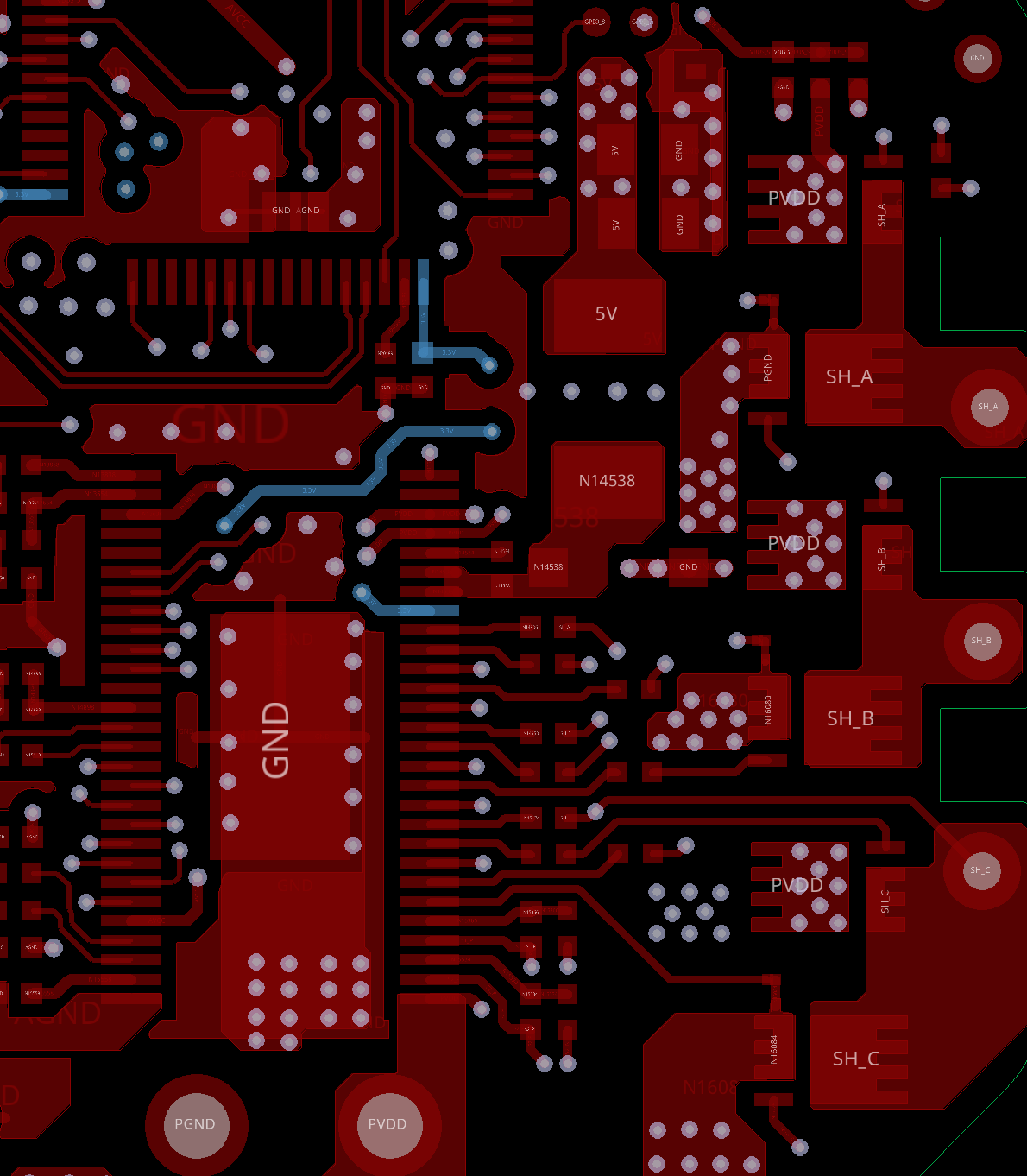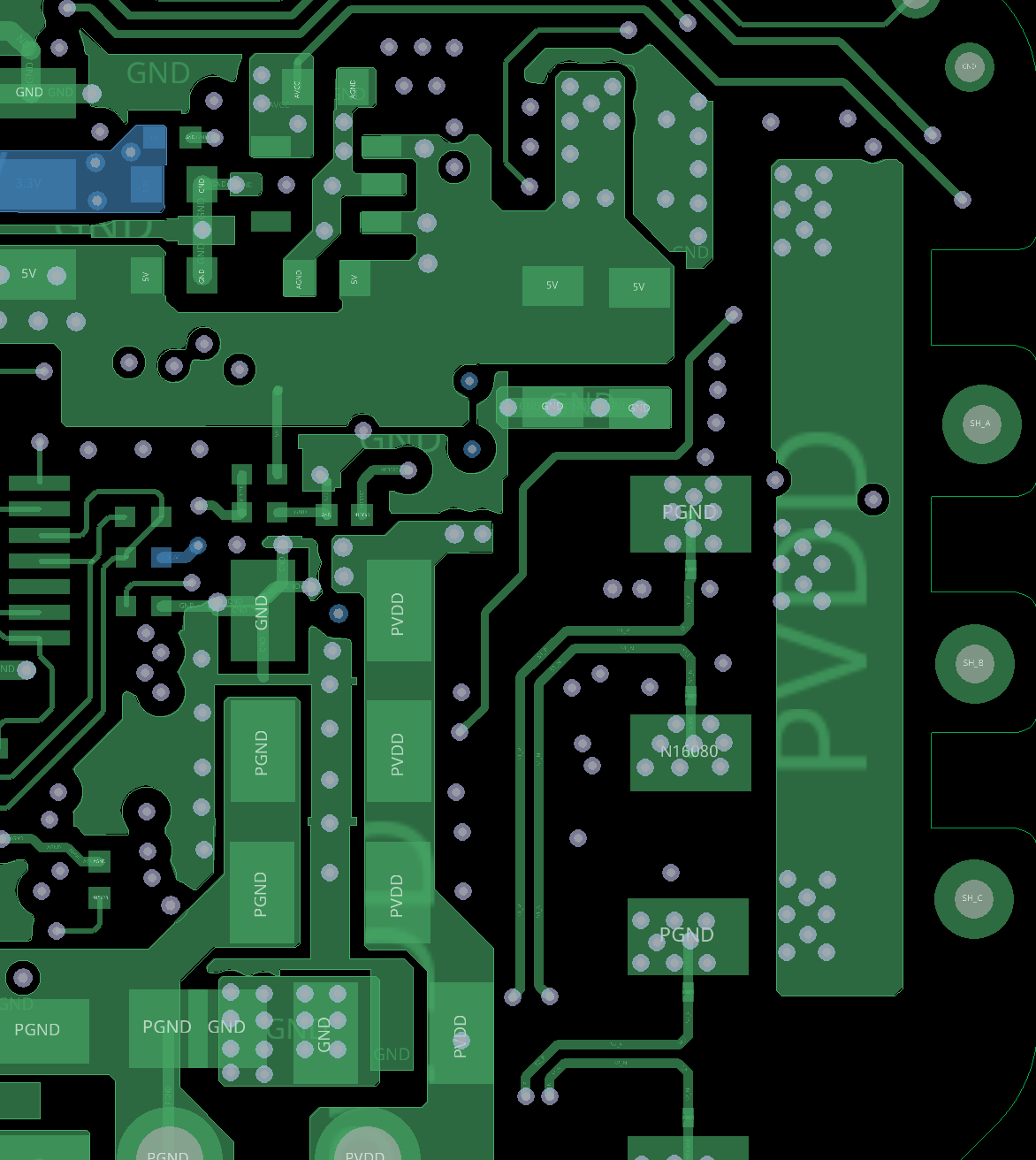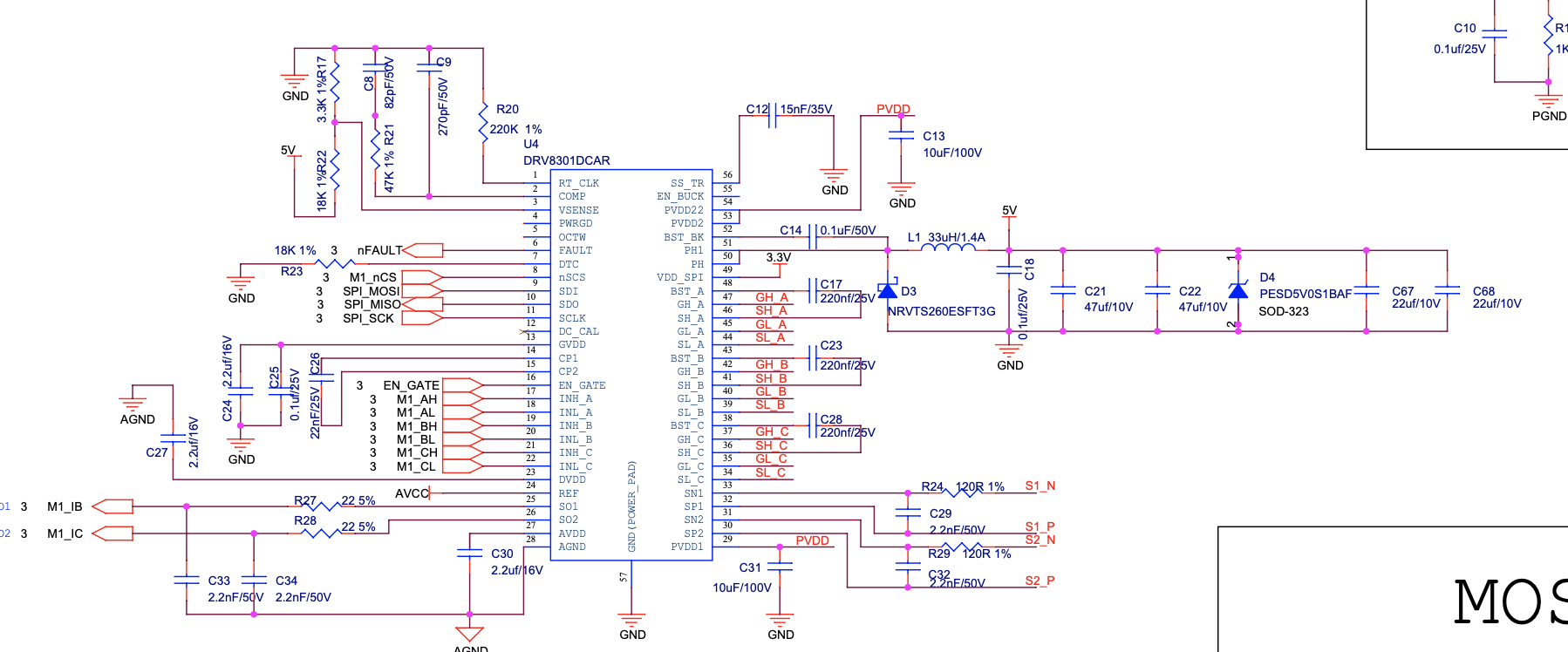Hi,
I designed a three phase motor controller using DRV8301, and found that the buck converter output have a very large oscillation. I also found no oscillation at light load. The output waveform, schematic and PCB layout are below. The PCB is six layer. The input Bus voltage is 24V.



